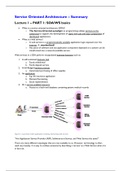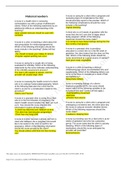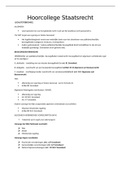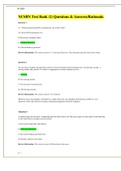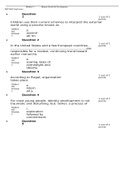Summary
Summary Service Oriented Architecture
- Course
- Institution
Summary for Service Oriented Architecture (SOA), course finished with a 9.0. Last page has a small overview of the most important concepts and learning topics in my opinion. Everything is from the sheets (as Lelli said the sheets are all what you need). I removed some redundancies, but there is st...
[Show more]
